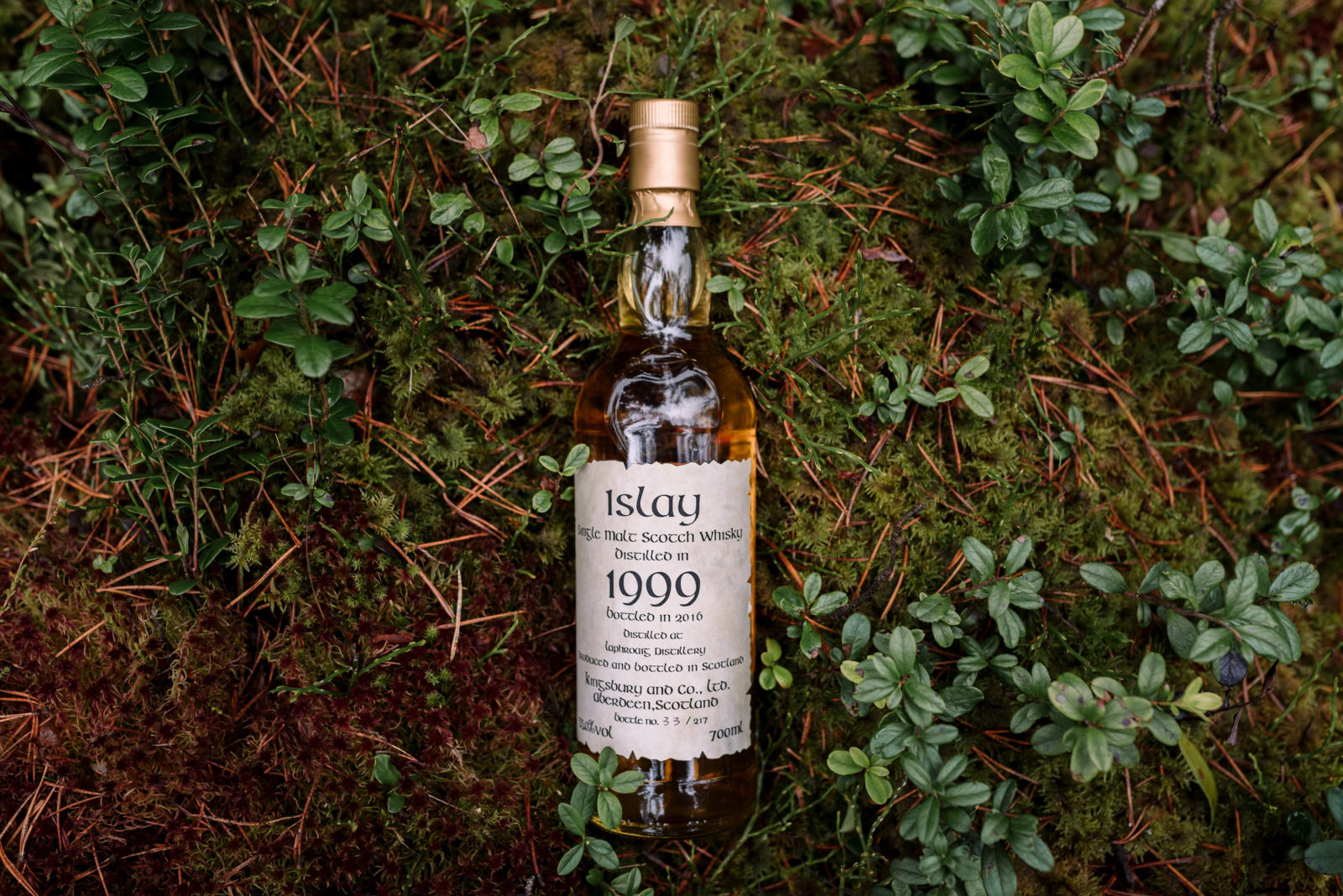Whisky of the Month: Laphroaig 16 Year Old (Kingsbury, 1999)
Independent Bottling
Once again it’s time to have to have a look at our Whisky of the Month.
For February we are going with a dram that is close to our hearts (both because it is a Whisky Foundation exclusive and because we thoroughly enjoyed drinking it), a dram from one of Islay’s most famous distilleries – the Laphroaig 16 Year Old by Kingsbury (1999).
This unique single cask bottling was matured in ex-Rum casks for 16 years, so it differs slightly from what you may expect from a Laphroaig whisky, but we can honestly tell you that it’s a welcome and intriguing change (at least we think so).
We’ll get onto what you should be looking out for in this dram a little while, but first we’ll look at its distillers.
Laphroaig
This whisky was created at the Laphroaig distillery, at the head of Loch Laphroaig on the South Coast of Islay.
For those that aren’t familiar, they are world-renowned (at least to whisky lovers) for producing top quality, generally heavily peated drams.
If you ask a Scotsman to name you a peated whisky, we would guess that 80% would say Laphroaig (we’re not basing this on anything other than a hunch).
The distillery has been producing whisky for over 200 years now, founded in 1815, and throughout that time they have expended a great deal of effort on perfecting the peated dram.
To many whisky drinkers, their flagship 10 Year Old is exactly that.
Along with the distinct peat flavours that their expressions exhibit, salty, maritime notes (imparted by the wind and waves crashing into the distillery and seeping into the casks) are the next most common theme.
A Kingsbury release
Our Whisky of the Month was laid down in 1999, before being bottled by indie bottler Kingsbury in 2016.
They purchased the cask from the distillery most likely because it didn’t meet their strict house-style.
Don’t get us wrong, there are still peat and maritime flavours apparent, but there is so much more going on (probably because of the rum cask) that the distillery managers perhaps felt it was not uniform enough to release as an official bottling.
This is most certainly a blessing in disguise!
The distillery has released whisky before that has been finished in rum casks, but never one that has being matured entirely in ex-Rum barrels.
So what of the indie bottler?
For those that have never heard of them, Kingsbury was founded in Aberdeen, Speyside, by Katsuhiko Takana, the president of Japan Import System Co. Ltd (a well-established, family run liquor store in Tsukiji).
They were keen to ensure that they were getting top quality, authentic Scotch whisky for their store and so they founded Kingsbury.
Takana and Gordon Wright (of Springbank) hand select all of their whiskies.
Most of the whiskies that they bottle are exclusive to the Japanese market, but thanks to our fantastic sourcing team, we can also get our hands on some exclusives for you.
This particular bottle is one of them.
The Whisky
So that’s you filled in on the distillery, the bottler and how and when this whisky was born. Now it’s time to get down to the all-important bit, the actual spirit itself. If you’re not excited already, this will get your mojo working.
As aforementioned (but worth mentioning again) this is a single cask whisky, laid down in 1999 and bottled in 2016, of which only 217 bottles were produced.
It was matured entirely in an ex-rum cask.
One of the most striking things about the bottle on first glance is its rustic label.
It looks as though it has been hand-written on a piece of parchment and could easily have been found washed up on a beach with a letter inside from one very hopeful lover to an oblivious other half.
The liquid is a pale straw colour, lacking a bit of the golden sparkle of your ordinary Laphroaig and adding to the illusion that this things been floating at sea for 10 years.
Fortunately, inside the spirit offers a depth and complexity that is hard to rival.
It has a whole range of notes for you to explore and gives you an insight into the incredible whiskies that the Laphroaig distillery are producing that don’t feature copious amounts of peat.
Tasting Notes
A little peat is the first thing that you notice on the nose, but it is considerably restrained.
Mango and passionfruit follow and a little ginger makes itself known. Vanilla can be detected and the longer you sniff the more you will notice the subtle undertones of peat throughout. Only a little hint of Laphroaig’s medicinal notes are obvious.
The palate brings an immediate sweetness and it’s quite ‘sugar caney’, probably from the rum. The peat is also there, but once again restrained. More citrus fruits come through with a sprinkling of salt over the top and this helps to smooth out a slight warmth from the alcohol.
The finish brings vanilla and oak along with a touch more fruitiness that hangs about for a few minutes and really holds your interest until your next sip.
Overall this beautiful Laphroaig brings a lot to the table. The maritime influences that you would expect are there, but diluted, as is such with the peat.
Instead we get a sweet, fruity dram that offers peat in accompaniment, rather than relying on it as the star of the show.
A truly lovely dram that is worthy of being our Whisky of the Month.



